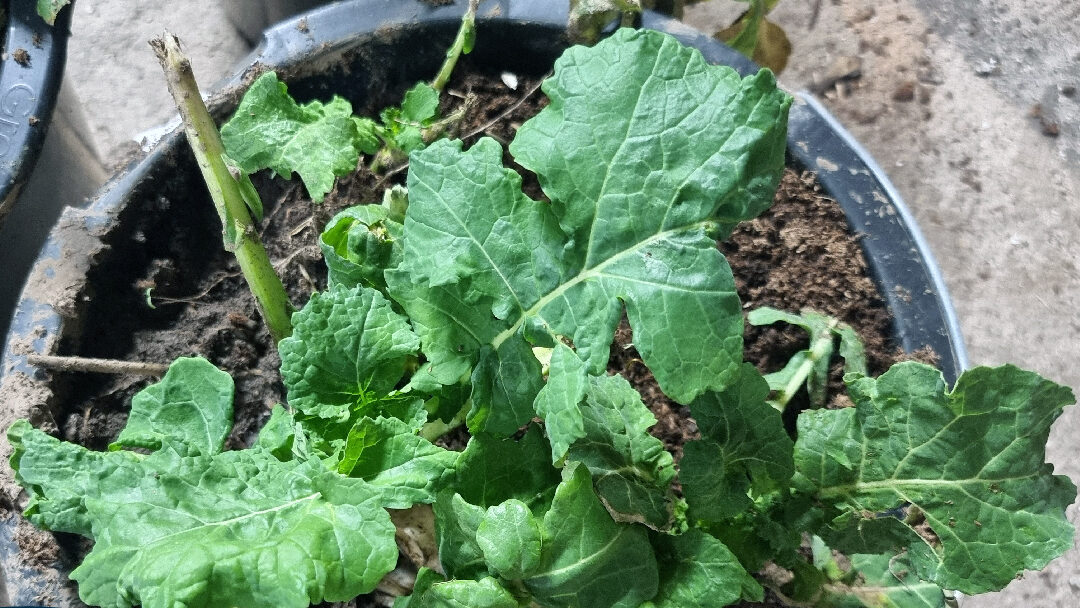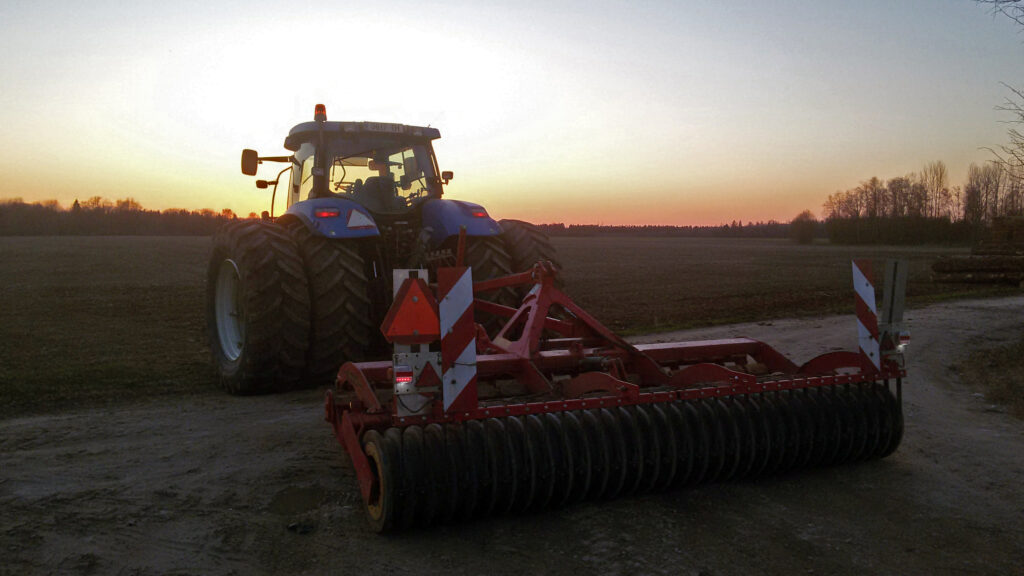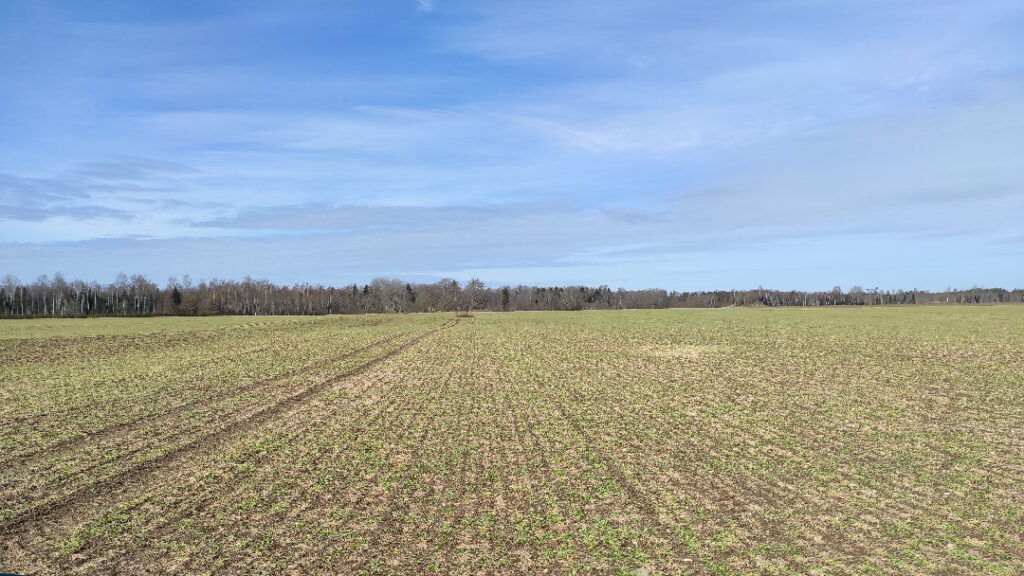Preface – After New Year’s, the temperature dropped steadily for several days and nights to -25 degrees Celsius. The snow cover on the rapeseed was only 2-5cm thick. Winter rapeseed is considered quite sensitive to cold, and temperatures as low as -15 degrees Celsius can be fatal to the plant (growth heap). My winter rapeseed grew quite vigorously thanks to the long autumn, and as I described in the previous post, I could have done another growth regulation.

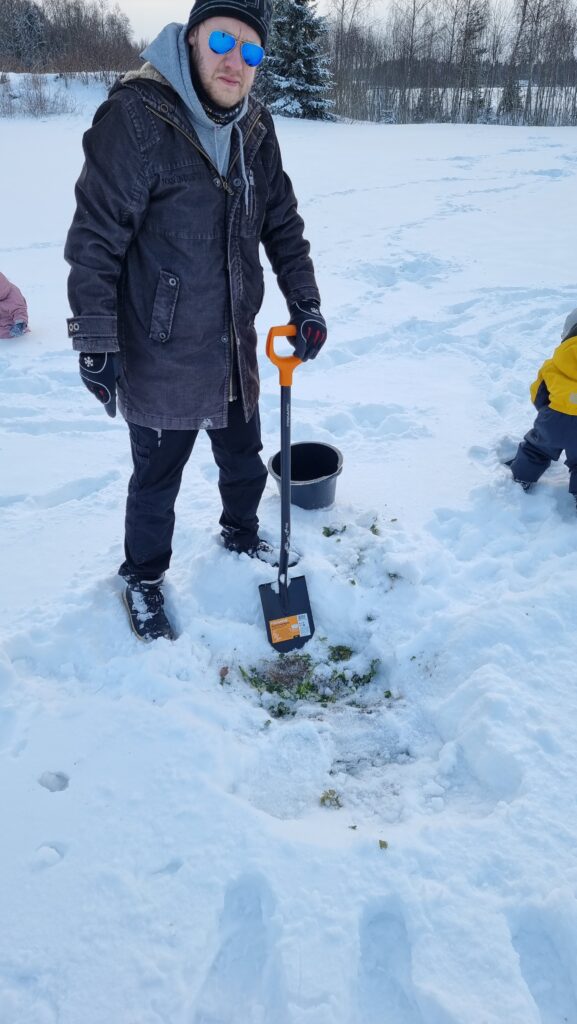
After the cold period, I discussed the likelihood of frost damage with a couple of farmers, and opinions ranged from certain death of the plants to less certain death 😀. So I decided that if there was a significant thaw, I would dig up some plants, put them somewhere warm to grow, and if nothing else came of this experiment, I could still post about it.
First, I inquired at the local agricultural research center about the purpose and feasibility of this experiment. The response I received was rather skeptical because excavating would severely damage the rapeseed’s root system, leading to stress in the plant and a long recovery time for the root system, during which the plant could die. I also wrote about this in my Instagram “stories,” and then one follower contacted me, urging me to undertake this experiment because they (under slightly different conditions, to be fair) had successfully dug up rapeseed plants and replanted them.
On January 14, 2024, I bought myself a new shovel, three pots, and a bag of growth peat, and after a longer thaw, I decided to start digging up the plants. Unfortunately, the ground was still frozen, and the experiment had to be abandoned.
On January 25, there had been another longer thaw, and a couple of days before, I removed the snow cover from the plants so that the rain could melt directly the soil. This time, the excavation was successful, and I brought 5 plants (3 larger and 2 smaller ones) indoors and placed them in the cellar to thaw out.

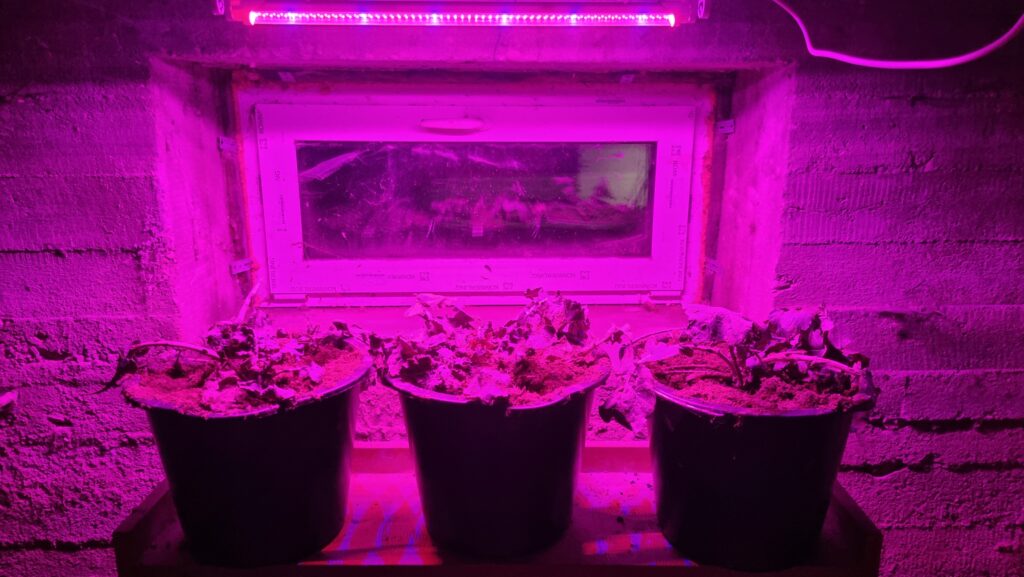
By January 29, it was clear that the duration of the Estonian winter sunshine + a cellar with only one window was not the best growth environment. I went to the local hardware store and got a growth lamp for the plants I started giving the plants 13 hours of light per day. The effect was visible within a few days as the plants turned greener and began to stretch towards the light. At the suggestion of a follower, I moved the plants closer to the lamp, and since a long-planned vacation was approaching, the plants were left to grow on their own for a while.
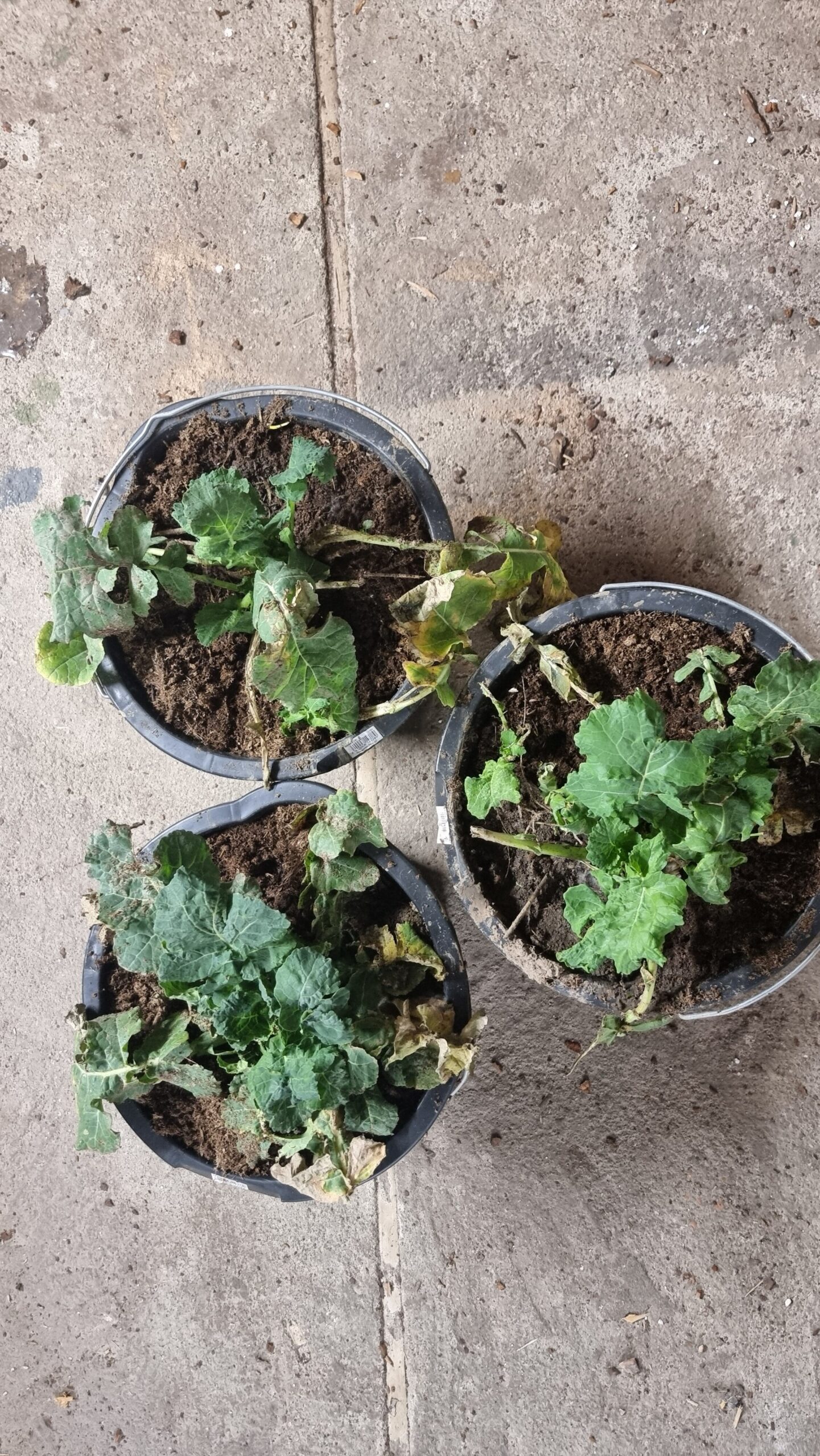
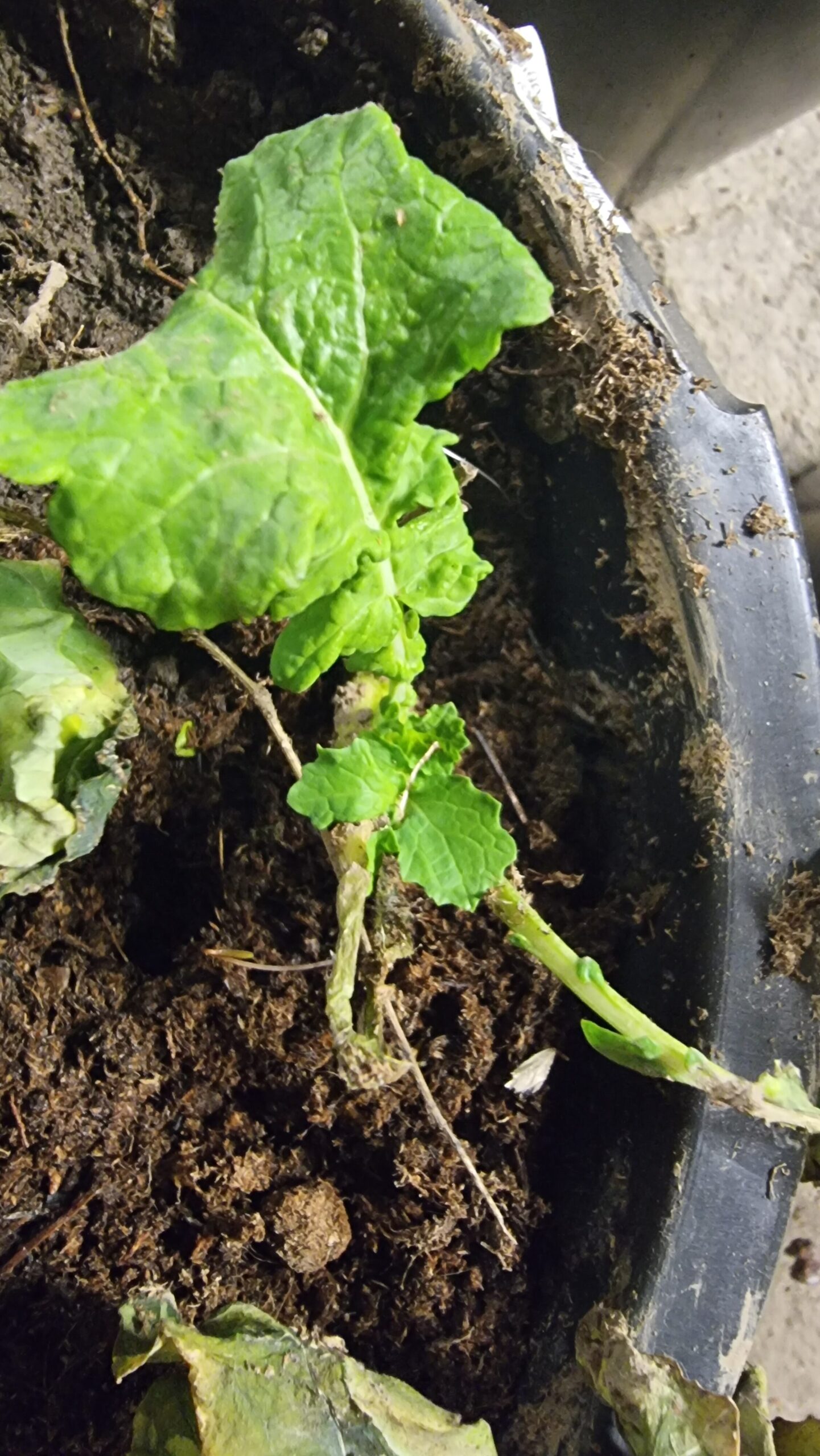
On February 13, I moved the plants out from under the growth lamp for a photoshoot and made the following observations:
- ALL plants have become greener than when they were brought indoors
- Turgor has been restored, and the plant stems are standing nicely upright
- Most importantly, ALL plants have started growing new leaves, meaning they are ALIVE!
What did I learn from this? I took plants from two different fields from different locations, and regardless of their growth stage, they are all alive. Was I just lucky? Hardly, because I treated the plants as poorly as possible 😀. Broken roots, crushed leaves, several days in the dark, etc. And if they survived such treatment, then they are definitely alive in the field as well.
Of course, it should be noted that if the winter hardening of the plants decreases in spring and it gets -25 degrees cold at that moment, it can be much more dangerous, but we’ll see what winter/spring has in store for us. Until then, I’m pretty sure my winter rapeseed is alive.

